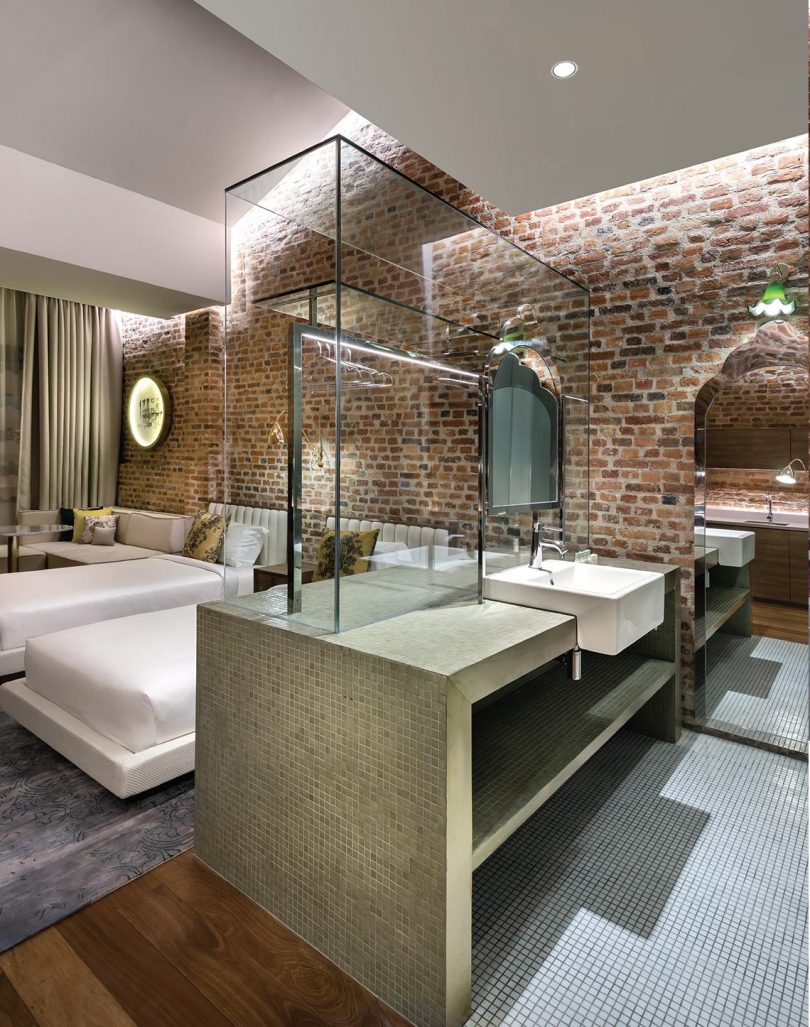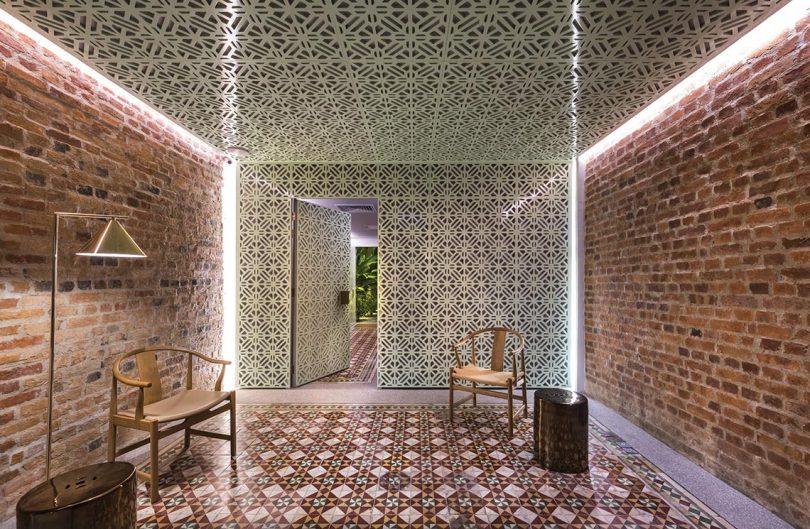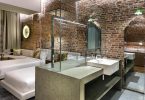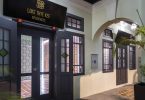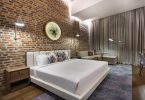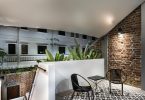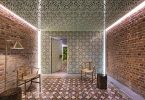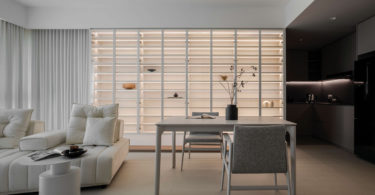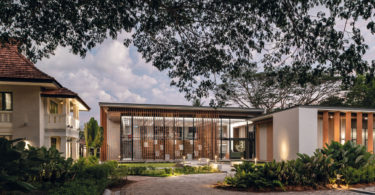Loke Thye Kee Residences is situated in the heart of Georgetown Penang, one of five Malaysian UNESCO World Heritage Sites. Set in five pre-war shophouses, the residences provides five suites for both long and short-term guests.
Harking back to the romance of the early 1900s, Loke Thye Kee Residences recalls the spirit of yesteryears in a modern day context. For its design, design architect and interior designer Ministry of Design (MOD) drew inspiration from this heritage and, specifically, the historic Loke Thye Kee restaurant, its 100-year-old namesake and neighbour. Both the restaurant and the residences are developed by the same owner, 1919 Global Sdn Bhd.
“I was very inspired by the romance of Penang in the 1900s—the mood and design of that bygone era was beguiling,” says Colin Seah, MOD’s founder-director. “We wanted to recall a similar charm in our design for the residences, but with an added contemporary twist that would modernise the experience and make it relevant for living today.”
LIVING HISTORY
Loke Thye Kee means House of Happiness in Hainanese. The namesake restaurant building was built in 1919 by local businessman and philanthropist Khoo Sian Ewe, the richest land owner in Penang of that time. He rented the iconic ship-inspired building to his family friends—brothers Loy Kok Boon and Loy Kok Dai—for their restaurant, which served traditional Hainanese Chinese and Western cuisine and was the choice venue for birthday dinners and wedding parties for the next eight decades.
True to its name, it was also the venue for many match-making arrangements, where young potential brides-to-be would catch a first glimpse of their suitors. These not-so-subtle arrangements would be sealed with a furtive glance and a sip of tea in a certain pre-arranged drinking style. Hence, Loke Thye Kee is also affectionately known as the Love Boat, which also refers to its architecture.
In the early 2000s, Singaporean investors 1919 Global purchased both the Loke Thye Kee restaurant and a series of five shophouses next to it, which are part of a cluster of pre-war heritage buildings that were abandoned for nearly two decades after the Asian financial crisis. The new owners have now begun the process of restoring the cluster into the Loke Thye Kee Heritage Village and injecting new life into the once bustling area.
LIVING HERITAGE
The five turn-of-the-century shophouses were converted into the Loke Thye Kee Residences. Designed amid the footprint of the traditional shophouse courtyard and alleyway, each of the five suites boasts soaring pitch roofs, a lush garden forecourt, and an intimate private balcony, along with living areas and full-facility pantry spaces.
“Our design isn’t a throwback to the past; neither does it attempt to preserve it,” explains Seah. “Instead, we use the past as a starting point of inspiration, eventually creating something that’s rooted in heritage but still relevant and contemporary.”
The traditional meets the contemporary on several levels, from the materials to the spatial experience. For example, the latticework in the reception area is inspired by the intricate tile patterns that are typical of the shophouse typology. The idea was to ‘continue’ the tiling pattern three-dimensionally in an abstract way.
The piece de resistance for the interiors is the original brick work parti-walls, which provide a lovely texture and foil against the modern and sleeker interventions, such as the glass wardrobes, chrome mirrors (abstracted from traditional colonial culture) and hovering timber clad desks and TV ledges. The rough texture of the original brick walls are visually enlivened by hidden LED cove lighting.
Traditional timber hardwood floors are contrasted with the customised contemporary fixtures, and the typically enclosed vanity and wardrobe spaces are celebrated as transparent glass boxes, which seamlessly extend into the rest of the room. Floor rugs, cushion fabrics and furniture pieces draw references to the past with a contemporary twist.
“We feel that these contrasts allow the old to not feel distant or historic, but living and connected to the present,” Seah adds. MOD also designed all the branding and in-room collateral to provide a holistic experience, ranging from a quirky pillow menu to a food map navigating the area’s street food, the room service menu to the TV menu.
To bring an additional local element into the suites, local Penang artist Ch’ng Kiah Kiean was commissioned to produce a series of nine special The lush garden forecourt has a private stairway leading to each suite pieces that capture the unique faces of some of Penang’s best known heritage buildings.
CHALLENGES
In their original form, the buildings were not in the best structural condition. There were rotting floor boards, roof leaks and even tilted parti-walls, and the roof and floors had to be redone completely. Certain key elements that were visually rich were kept or recreated, such as the articulation of the window and door frames, the external façade’s ornamentation, and the tiles.
Construction quality was a main challenge, and numerous refinements were required from carpenters and tradesmen. The designers also had to tenaciously navigate through complex approval processes with the local conservation committee.
Obviously, the designers’ tenacity paid off when the masterpiece was unveiled two years later. This project has since been named Best Hotel Interior Design, Malaysia 2017 by BCI Asia, featured in Wallpaper’s Travel Lifestyle Showcase and Net-a- Porter’s Luxe Edit profile, and was a finalist at Asian Hotel Design Award’s 2016 Best Suite category, organised by Sleeper Magazine, London.
Location: 326, Jalan Penang, George Town, Penang
Completion Date: May 2015
Site Area: 421 square metres
Gross Floor Area: 633 square metres
Developer: 1919 Global Sdn Bhd
Architecture Firm: K.H. Tan Architect
Interior Design Firm: Ministry of Design Pte Ltd
Civil & Structural Engineer: Perunding Pakatan Cergas
Mechanical & Electrical Engineer: O&A Consult Sdn Bhd
Quantity Surveyor: Kuantibina Sdn Bhd
Main Contractor: SeriousBiz Sdn Bhd
Interior Fit-Out Contractor: SeriousBiz Sdn Bhd
Landscape Contractor: Camellia Landscape Sdn Bhd
Artist: Ch’ng Kiah Kiean
Images: Ministry of Design Pte Ltd; Edward Hendricks



